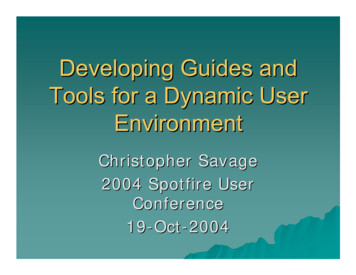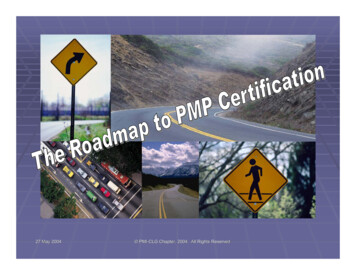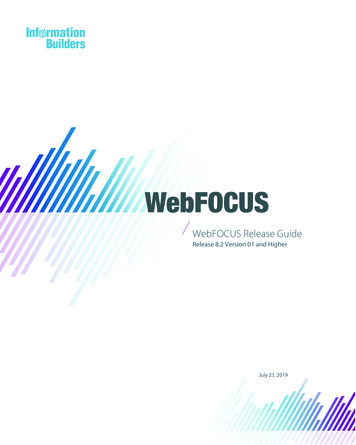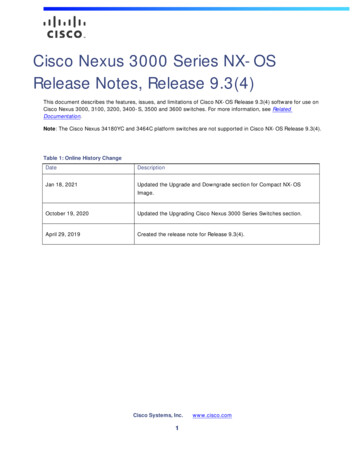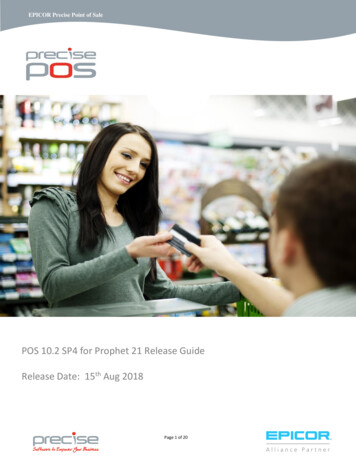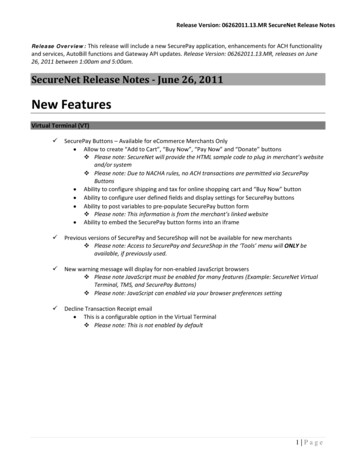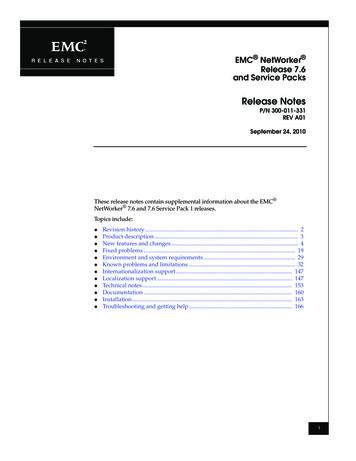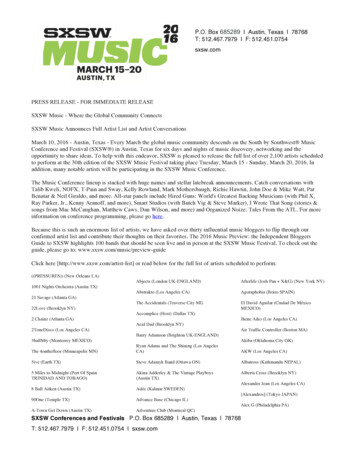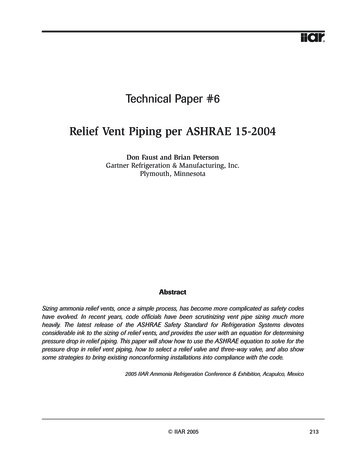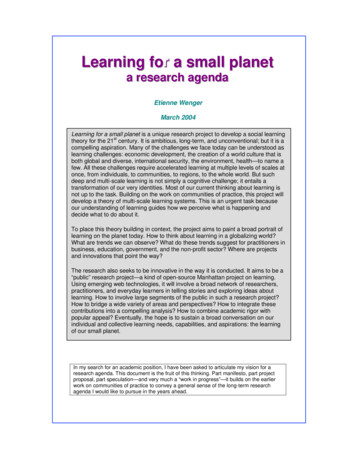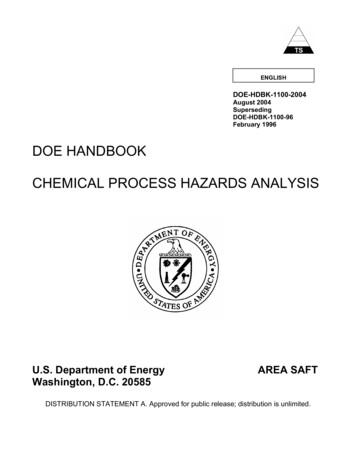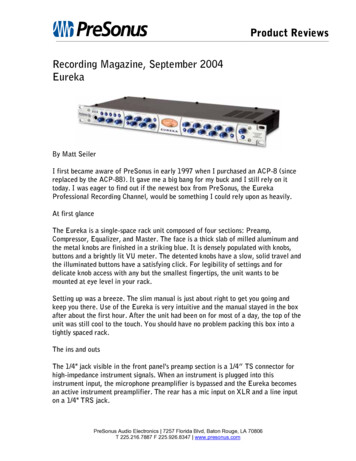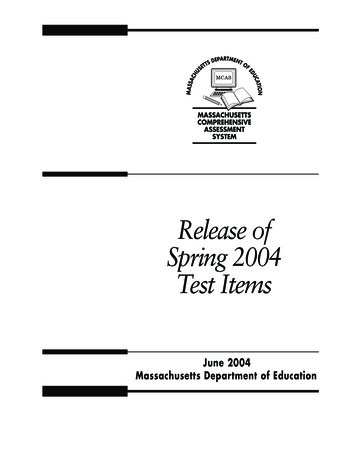
Transcription
Release ofSpring 2004Test ItemsJune 2004Massachusetts Department of Education
Massachusetts Department of EducationThis document was prepared by the Massachusetts Department of Education.Dr. David P. Driscoll, Commissioner of EducationBoard of Education MembersJames A. Peyser, Chairman, DorchesterHenry M. Thomas, III, Vice-Chairman, SpringfieldHarneen Chernow, Jamaica PlainJ. Richard Crowley, AndoverJeff De Flavio, Chair, Student Advisory Council, BelmontJudith I. Gill, Chancellor, Higher Education, BostonRoberta R. Schaefer, WorcesterAbigail M. Thernstrom, LexingtonDavid P. Driscoll, Commissionerand Secretary to the BoardThe Massachusetts Department of Education, an Affirmative Action employer, is committed to ensuringthat all of its programs and facilities are accessible to all members of the public. We do not discriminateon the basis of age, color, disability, national origin, race, religion, sex, or sexual orientation.Copyright 2004 Massachusetts Department of EducationPermission is hereby granted to copy any or all parts of this document for non-commercial educationalpurposes. Please credit the “Massachusetts Department of Education.”This document is printed on recycled paper.350 Main Street, Malden, Massachusetts 02148-5023www.doe.mass.edu781-338-3000
Commissioner’s ForewordDear Colleagues:The Massachusetts Comprehensive Assessment System (MCAS) is the Commonwealth’sstatewide testing program for public school students, developed in response to theEducation Reform Law of 1993. MCAS is based exclusively on the rigorous academiclearning standards contained in the Massachusetts Curriculum Frameworks. TheseFrameworks and the MCAS program have been developed with the direct and activeinvolvement of educators from across Massachusetts and with the support of the Boardof Education. Together, the Frameworks and MCAS are designed to raise the academicachievement of all students in the Commonwealth.The purpose of this document is to share with educators and the public all of the testitems on which the Spring 2004 MCAS student results are based. The release of theseitems provides considerable information regarding the kinds of knowledge andskills that students are expected to demonstrate on the MCAS tests. Local educators areencouraged to use this document together with their school’s Test Item Analysis Reportsto identify strengths and weaknesses in curriculum and instruction and to guide thechanges necessary to more effectively serve students.You will find this document on the Internet at www.doe.mass.edu/mcas/testitems.html.Please note that, due to some publishers’ restrictions on copyright permissions, the paperversion of this document contains some MCAS test materials that cannot be included onthe Internet version.Thank you for your support as we work together to strengthen education for ourstudents in Massachusetts.Sincerely,David P. DriscollCommissioner of Education
Table of ContentsCommissioner’s ForewordIII. Document Purpose and Structure . . . . . . . . . . . . . . . . . . . . . . . . . . . . . 1IIII. Reading, Grade 3 . . . . . . . . . . . . . . . . . . . . . . . . . . . . . . . . . . . . . . . . . 4IIII. English Language Arts, Grade 4 . . . . . . . . . . . . . . . . . . . . . . . . . . . . . 31A. Composition . . . . . . . . . . . . . . . . . . . . . . . . . . . . . . . . . . . . . . . . . 32B. Language and Literature . . . . . . . . . . . . . . . . . . . . . . . . . . . . . . . . . 35IIV. English Language Arts, Grade 7 . . . . . . . . . . . . . . . . . . . . . . . . . . . . . 64A. Composition . . . . . . . . . . . . . . . . . . . . . . . . . . . . . . . . . . . . . . . . . 65B. Language and Literature . . . . . . . . . . . . . . . . . . . . . . . . . . . . . . . . . 67IV. English Language Arts, Grade 10 . . . . . . . . . . . . . . . . . . . . . . . . . . . . 94A. Composition . . . . . . . . . . . . . . . . . . . . . . . . . . . . . . . . . . . . . . . . . 95B. Language and Literature . . . . . . . . . . . . . . . . . . . . . . . . . . . . . . . . . 97VI. Mathematics, Grade 4 . . . . . . . . . . . . . . . . . . . . . . . . . . . . . . . . . . . . 123VII. Mathematics, Grade 6 . . . . . . . . . . . . . . . . . . . . . . . . . . . . . . . . . . . . 148VIII. Mathematics, Grade 8 . . . . . . . . . . . . . . . . . . . . . . . . . . . . . . . . . . . . 178IX. Mathematics, Grade 10 . . . . . . . . . . . . . . . . . . . . . . . . . . . . . . . . . . . 206X. Science and Technology/Engineering, Grade 5 . . . . . . . . . . . . . . . . . . 232XI. Science and Technology/Engineering, Grade 8 . . . . . . . . . . . . . . . . . . 253XII. Biology, Grade 10 . . . . . . . . . . . . . . . . . . . . . . . . . . . . . . . . . . . . . . . 274XIII. Chemistry, Grade 10 . . . . . . . . . . . . . . . . . . . . . . . . . . . . . . . . . . . . . 291XIV. Introductory Physics, Grade 9/10 . . . . . . . . . . . . . . . . . . . . . . . . . . . 308XV. Technology/Engineering, Grade 9/10 . . . . . . . . . . . . . . . . . . . . . . . . . 324
I. Document Purpose and Structure
Document Purpose and StructurePurposeThe purpose of this document is to share with educators and the public all of the testitems on which the spring 2004 MCAS student results are based and also share thecommon items from the high school pilot tests in biology, chemistry, introductory physics,and technology/engineering. Release of these items is intended to provide additionalinformation regarding the kinds of knowledge and skills that students are expected todemonstrate on MCAS tests. Local educators will be able to use this information toidentify strengths and weaknesses in their curriculum and instruction, and to guide thechanges necessary to more effectively meet their students’ needs.This publication is also intended to be used by school and district personnel as acompanion document to the school- and district-level Test Item Analysis Reports. Eachschool receives a fall 2004 Test Item Analysis Report for each content area at each gradelevel tested (e.g., grade 10 Mathematics). These reports provide data generated fromstudent responses. Each report lists, for the school receiving the report, the names of allenrolled students in the grade covered by the report and shows how each studentanswered each common item in the content area. The report labels each item as multiplechoice, open-response, short-answer, or writing prompt and identifies the item’s MCASreporting category. Item numbers in this document correlate directly to the “ItemNumbers” in the Test Item Analysis Reports.StructureEach subsequent chapter of this document contains information and materials for oneMCAS test (one grade level and one content area). For example, Chapter II containsinformation for the Grade 3 Reading Test; chapter IX contains information for the Grade10 Mathematics Test. Note that chapters III through V contain information for both theELA Composition (Part A) and the ELA Language and Literature (Part B) Tests for therelevant grade.Beginning with chapter II, each chapter has three main sections. The first section introducesthe chapter by listing the Massachusetts Curriculum Framework content strands assessedby MCAS in that chapter’s content area. These content strands are identical to the MCASreporting categories under which test results are reported to schools and districts.In addition, there is a brief overview of the test (number of test sessions, types of items,reference materials allowed, and cross-referencing information).The second section contains the common test items used to generate spring 2004 MCASstudent results for that chapter’s grade level and content area. With the exception ofthe ELA Composition writing prompt, the test questions in this document are shown inthe same order and basic format in which they were presented in the test booklets. The2
mathematics reference tools used by students during MCAS Mathematics test sessions(Mathematics Tool Kit for grade 4; Mathematics Reference Sheets for grades 6, 8,and 10) are inserted immediately following the last question in each Mathematics chapterof this document. Students in grades 4, 6, and 8 were also provided with plastic rulers,and students in grade 6 were provided with plastic protractors. Images of these tools arenot presented in this document.Due to copyright restrictions, in English Language Arts Test chapters certain readingpassages that appear in the printed version of this document are not included in theversion available on the Department’s Internet site. Copyright information is providedin both versions of the document for all common reading selections.The final section of each chapter is a table that cross-references each common item withits MCAS reporting category and with the Framework standard it assesses. Correctanswers to multiple-choice and short-answer questions are also listed.Responses to open-response items and compositions written in response to writingprompts are scored individually. Scoring procedures will be explained further in theMCAS document, Guide to Interpreting the Spring 2004 MCAS Reports for Schoolsand Districts, due for release in fall 2004. Similar guides are currently availableon the Department’s Internet site for previous years’ MCAS School Reports and DistrictReports. Sample student responses and compositions from previous MCASadministrations may also be viewed on the Department’s Internet site.Materials presented in this document are not formatted exactly as they appeared inStudent Test Booklets. For example, in order to present items most efficiently in thisdocument, the following modifications have been made: Some fonts and/or font sizes may have been changed and/or reduced. Some graphics may have been reduced in size from their appearance in StudentTest Booklets; however, they maintain the same proportions in each case. The English Language Arts Composition writing prompt is presented on thesame page of this document as the Make-up writing prompt, and the lined pagesprovided for students’ initial drafts are omitted. All references to page numbers in answer booklets have been deleted from thedirections that accompany test items.3
II. Reading, Grade 3
Reading, Grade 3The spring 2004 Grade 3 MCAS Reading Test was based on learning standards in the twocontent strands of the Massachusetts English Language Arts Curriculum Framework(2001) listed below. Page numbers for the learning standards appear in parentheses. Language (Framework, pages 19–26) Reading and Literature (Framework, pages 35–64)The English Language Arts Curriculum Framework is available on the Departmentwebsite at www.doe.mass.edu/frameworks/ela/0601.pdf.In Test Item Analysis Reports and on the Subject Area Subscore pages of the MCASSchool Reports and District Reports, Grade 3 Reading test results are reported undertwo MCAS reporting categories: Language and Reading and Literature.Test Sessions and Content OverviewMCAS Grade 3 Reading Test and Answer Booklets contained three separate test sessions.Each session included selected readings, followed by multiple-choice and open-responsequestions. Common reading passages and test items are shown on the following pages asthey appeared in Test and Answer Booklets. Due to copyright restrictions, certain readingselections cannot be released to the public on the website. All of these passages appear inthe printed version of this document.Reference Materials and ToolsNo reference materials or tools were allowed during any Grade 3 Reading test session,with the exception of bilingual word-to-word dictionaries used by limited Englishproficient students.Cross-Reference InformationThe table at the conclusion of this chapter indicates each item’s reporting categoryand the Framework general standard it assesses. The correct answers for multiple-choicequestions are also displayed in the table.5
HOW TO ANSWEROPEN-RESPONSE QUESTIONSBe sure to read all parts of each question carefully. make each response as clear, complete,and accurate as you can. check your answers.
ReadingSESSION 1DIRECTIONSThis session contains one reading selection with eight multiple-choice questions. Formultiple-choice questions, mark your answers by filling in the circle next to the best answer.Thumb 0303L CArt CodeThumb0303L.AR1A little boy named Juan has a problem, but his parents have an idea what to do. Read the story tosee if it works. Use information from the story to answer the questions that follow.Now That I Have a Green Thumbby Patricia C. McKissackJuan sucked his thumb, even while he was sleeping. Some people told him,“Big boys don’t suck their thumbs.” Other people said, “You’ll be going to schoolin September. You can’t suck your thumb then.”2But Juan didn’t feel ver y big. Besides, it was Januar y, andSeptember was a long way off. So Juan continued to suck his thumb.3One day Juan went shopping with his parents.4“You might have a green thumb,” said Mother.5“What?” Juan asked.6“A green thumb means you can grow plants well,” Father explained.7Juan looked at his thumb. It wasn’t green. It was the same brown color he wasall over. “How do I know if my thumb is green?” he asked.8Father smiled. “We’ll buy some seeds. You can plant them. If they grow, thenyou have a green thumb.”9Juan took his thumb out of his mouth. “Maybe it will turn green if I stopsucking it,” he said.10Mother laughed. She bought seeds, some pots, and pottingsoil. Juan planted three or four seeds in each pot. He watered them andthen set the pots in a sunny window.11He waited. In eight days little green sprouts began to push through the soil.12“My plants are growing!” he shouted. But his thumb was stillbrown like the rest of him.13Winter passed quickly. The days grew longer and warmer. Mother told Juanwhen it was time for him to plant his seedlings outside.14First Juan dug the soil and smoothed it out. Then he planted the seedlingsabout eight feet apart. Spring rains watered the plants, and they grew stronger.Juan was careful not to suck his thumb, but it was still brown – no sign ofgreen anywhere.15Summer came. The days grew hot. No rain fell. Juan had to water his plants.Father bought some plant food, and Juan fed his plants. He pulled weeds. Soon17
Reading161718192021222324Session 1afterwards Juan saw a bright orange flower on one of the plants. Then anotherflower and another bloomed.All summer Juan watched his garden. The plants grew into large vines. Juanalso watched his thumb. But it hadn’t turned green, even though he hadn’t put itin his mouth for a long, long time.When September came, Juan went to school. He met many new friends. Butevery afternoon he hurried home to see about his garden. Wonderful thingswere happening. One cool October day, Juan lifted one of the dark green leaves.He found a large orange pumpkin—and another and another. Wherever aflower had bloomed, a pumpkin had grown.Juan took one of the pumpkins to “show and tell” at school. Everybodyagreed that Juan did have a green thumb.Kelly sucked her thumb.“You might have a green thumb too,” Juan told her.“How will I know?” Kelly asked.“Why don’t you plant some seeds and see if they grow?”Kelly looked at her thumb closely. “Will my thumb turn green?” she asked.Juan showed her his thumb. “I don’t know,” he answered. “I’m still waiting.”“Now That I Have a Green Thumb” by Patricia C. McKissack, from A Piece of the Wind. Copyright 1990by Ruthilde Kronberg and Patricia C. McKissack. Reprinted by permission of Patricia C. McKissack.8
ReadingSession 1Mark your choices for multiple-choice questions 1 through 8 by filling in the circle next to thebest answer.3008943–Thumb0303L C 13008944–Thumb0303L C3 According to the story, why does Juandecide to stop sucking his thumb?His parents tell him to.1His friends make fun of him.4He decides he is too old for it.6*He wants to see if it will turn green. *93008941–Thumb0303L C 2Which paragraph in the story explainswhat it means to “have a green thumb”?3008949–Thumb0303L C4 According to the story, where isJuan when he decides to stopsucking his thumb?According to the story, what does Juando when spring arrives?He plants his seedlings inthe garden. *at homeat schoolHe goes to the store to buybigger pots.in his gardenHe gives plant food to hispotted plants.out shopping *He snips the dead leaves offthe plants.9
ReadingSession 13008954–Thumb0303L C 53008948–Thumb0303L CAccording to the story, where doesJuan find his first pumpkin?Read the sentence from the story inthe box below.in a potBut his thumb was stillbrown like the rest of him.under a leaf *7 under the soilbehind a flowerAs it is used in the sentence, theword rest meansa short break.leftover food.3008950–Thumb0303L C 6According to the story, what does Juantake to school to show to his classmates?a peaceful nap.a vineall other parts. *a potted plant3021386–Thumb0303L C8 a pumpkin *an orange flowerReread paragraphs 11–14 in the story.What is a seedling?a small, young plant *a flower that bears seedsa kind of seed that is tinya plant that has stopped growing10
ReadingSESSION 2DIRECTIONSThis session contains three reading selections with sixteen multiple-choice questions and oneopen-response question. For multiple-choice questions, mark your answers by filling in thecircle next to the best answer. For the open-response question, write your answer below thequestion in the space provided.030011P C030012P CArt Code 030012P.AR1The two poets who wrote these poems imagined what it’s like to be a snail, sliding along in a shell,nibbling on plants. It wouldn’t be easy, would it? Join them on their imaginary trip. After you readthe poems, answer the questions that follow.SnailStanza 1Stanza 2Snail upon the wall,Have you got at allAnything to tellAbout your shell?Only this, my child—When the wind is wild,Or when the sun is hot,It’s all I’ve got.—John DrinkwaterThe Snail—Jack PrelutskyStudents read a poem titled “The Snail” and then answered questions9 through 12 that follow on the next page of this document.Due to copyright restrictions, the poem cannot be released to the publicin this document. For more information, see the copyright citation below.THE SNAIL: TEXT COPYRIGHT 1983 by JACK PRELUTSKY.SNAIL by John Drinkwater. Copyright 1929 by John Drinkwater.ILLUSTRATION COPYRIGHT 1983 BY PAUL ZELINKSY. Used by permission of HarperCollins Publishers.11
ReadingSession 2Mark your choices for multiple-choice questions 9 through 12 by filling in the circle next to thebest answer.2094829 C9 2094831 C11 In the first poem, “Snail,” who is speakingin stanza 2?In the second poem, “The Snail,” thewords “at two or three inches a day” tellus that the snaila childis very long.the snail *moves from side to side.the windgets bigger and smaller.the Sunmoves very slowly. *2094830 CRead the line from the first poem, “Snail,” in thebox below.2094832 C12 It’s all I’ve got. 10In the second poem, “The Snail,” the wordunconcerned meansnot worried. *sleepy.What does this line mean?not lonely.The snail is frightened by wild andwindy weather.friendly.The snail does not like very hotweather.The snail’s shell is shelter in anyweather. *The snail is happiest on the wall inits shell.12
ReadingLudwig0303I CSession 2Art CodeLudwig0303I.AR1, .AR2Ludwig van Beethoven had a problem. He wanted to write music but he could not hear! TodayBeethoven is known as a great composer. This selection tells you how he was able to solve hisproblem. Read the selection and answer the questions that follow.Ludwig van Beethoven:of a Silent Worldby Jeanette LeardiStudents read a selection titled “Ludwig van Beethoven: Master of a Silent World”and then answered questions 13 through 21 that follow on the next pages of thisdocument. Due to copyright restrictions, the passage cannot be released to thepublic in this document. For more information, see the copyright citation below.From “Ludwig van Beethoven: Master of a Silent World” by Jeanette Leardi from ON THE HORIZON,pp. 199, 202–204.
3 One day Juan went shopping with his parents. 4 “You might have a green thumb,” said Mother. 5 “What?” Juan asked. 6 “A green thumb means you can grow plants well,” Father explained. 7 Juan looked at his thumb. It wasn’t green. It was the same brown color he was all ov
